
Plains warfare between various American Indian groups; and various European American groups was influenced and precluded by changes in technologies and military strategies in the Eastern Woodlands and Southwest from earlier colonial contacts of French,Below are 30mm willie,no one ever came near to getting the great artistic flair of willie.
 Dutch, English, Spanish and others from the late 1500's into the mid 1800's. Even during the peak conflicts (1851-1890) the American army tactics and techniques of warfare change, as well as the Plains cultures.
Dutch, English, Spanish and others from the late 1500's into the mid 1800's. Even during the peak conflicts (1851-1890) the American army tactics and techniques of warfare change, as well as the Plains cultures.
Warfare has many aspects and analysis begins with the reasons and goals humans propose for engaging in such futile and wasteful action. Tactics and Techniques are the terms military historians use to refer the methods of conducting war. It is generally accepted but not readily admitted that warfare is magnified and intensified in conjunction with the development of agriculture/civilization and further with industrialization. This created a contradiction when the term civilization is used since cultures became more violent with the never ending competition for resources as agriculture produced increased populations. In our own arrogance we see pre-industrial cultures as being inferior and less civilized; when in fact from the crucial perspective of human behavior and relationships contemporary culture is mired in cultural regression.







American Indian cultures of the Eastern Woodlands, Plains and Southwest had developed a more competitive agricultural lifestyle with intensification of warfare. Europeans by the 1600s were also agriculturalists but had moved more quickly in industrial pursuits of metal and gunpowder acquired from China. European warfare was certainly more organized and pervasive in the idea of conquest by destruction of property and slaughter of men, women and children. Certainly American Indians were equally ruthless but tended to conduct smaller scale raids and captured women and children for adoption to replace their own losses. Initial conflicts in the East and Southwest indicate that American Indians were impressed with firearms, metal, and horses; but that the bow and arrow had a greater rate of fire. It also was recognized by European Americans that disease was the more effective weapon for the removal of Indian populations. Further, the use of Indian mercenaries could be effective in tracking, guerilla warfare and even in conventional battles (e.g. Battle of Horseshoe Bend).
 In March 1814, General Jackson's army left Fort Williams on the Coosa, The fort is now under this artificial lake.
In March 1814, General Jackson's army left Fort Williams on the Coosa, The fort is now under this artificial lake. cut a 52-mile trail through the forest in three days, and on the 26th made camp six miles north of Horseshoe Bend. The next morning, Jackson sent General John Coffee and 700 mounted infantry and 600 Cherokee and Lower Creek allies
cut a 52-mile trail through the forest in three days, and on the 26th made camp six miles north of Horseshoe Bend. The next morning, Jackson sent General John Coffee and 700 mounted infantry and 600 Cherokee and Lower Creek allies  three miles down-stream to cross the Tallapoosa and surround the bend. He took the rest of the army - about 2000 men, consisting of East and West Tennessee militia and the Thirty-ninth U.S. Infantry - into the peninsula and at 10:30 a.m. began an ineffectual two-hour artillery bombardment of the Red Sticks' log barricade. At noon, some of Coffee's Cherokees
three miles down-stream to cross the Tallapoosa and surround the bend. He took the rest of the army - about 2000 men, consisting of East and West Tennessee militia and the Thirty-ninth U.S. Infantry - into the peninsula and at 10:30 a.m. began an ineffectual two-hour artillery bombardment of the Red Sticks' log barricade. At noon, some of Coffee's Cherokees  crossed the river and assaulted the Red Sticks from the rear. Jackson quickly ordered a frontal bayonet charge, which poured over the barricade. Fighting ranged over the south end of the peninsula throughout the afternoon. By dark at least 800 of Chief Menawa's 1,000 Red Sticks were dead (557 slain on the field and 200-300 in the river).
crossed the river and assaulted the Red Sticks from the rear. Jackson quickly ordered a frontal bayonet charge, which poured over the barricade. Fighting ranged over the south end of the peninsula throughout the afternoon. By dark at least 800 of Chief Menawa's 1,000 Red Sticks were dead (557 slain on the field and 200-300 in the river). Menawa himself, although severely wounded, managed to escape. Jackson's losses in the battle were 49 killed and 154 wounded, many mortally. As both sides fought as allies or enemies, tactics and techniques changed as the gun began to be more effective. In the 1600s the matchlock and flintlock were rather inaccurate and had a slow rate of fire. From 1750-1840 the muzzle loading flintlock musket (smooth barrel) evolved to the much more accurate flintlock rifle (rifled/grooved barrel) that is sometimes referred to as the 'Kentucky Rifle'.
Menawa himself, although severely wounded, managed to escape. Jackson's losses in the battle were 49 killed and 154 wounded, many mortally. As both sides fought as allies or enemies, tactics and techniques changed as the gun began to be more effective. In the 1600s the matchlock and flintlock were rather inaccurate and had a slow rate of fire. From 1750-1840 the muzzle loading flintlock musket (smooth barrel) evolved to the much more accurate flintlock rifle (rifled/grooved barrel) that is sometimes referred to as the 'Kentucky Rifle'.
Pennsylvania/Kentucky Rifle
From about 1840-1851 the percussion breech loading rifle was common like the famous Hawkins Rifle which was effective in the slaughter of the Plain's Bison.
Just after the time the frontier that had jumped from St. Louis/ Independence, Missouri to the Far West via the Oregon Trail, California Trail, Immigrant Trail and Sante Fe Trail
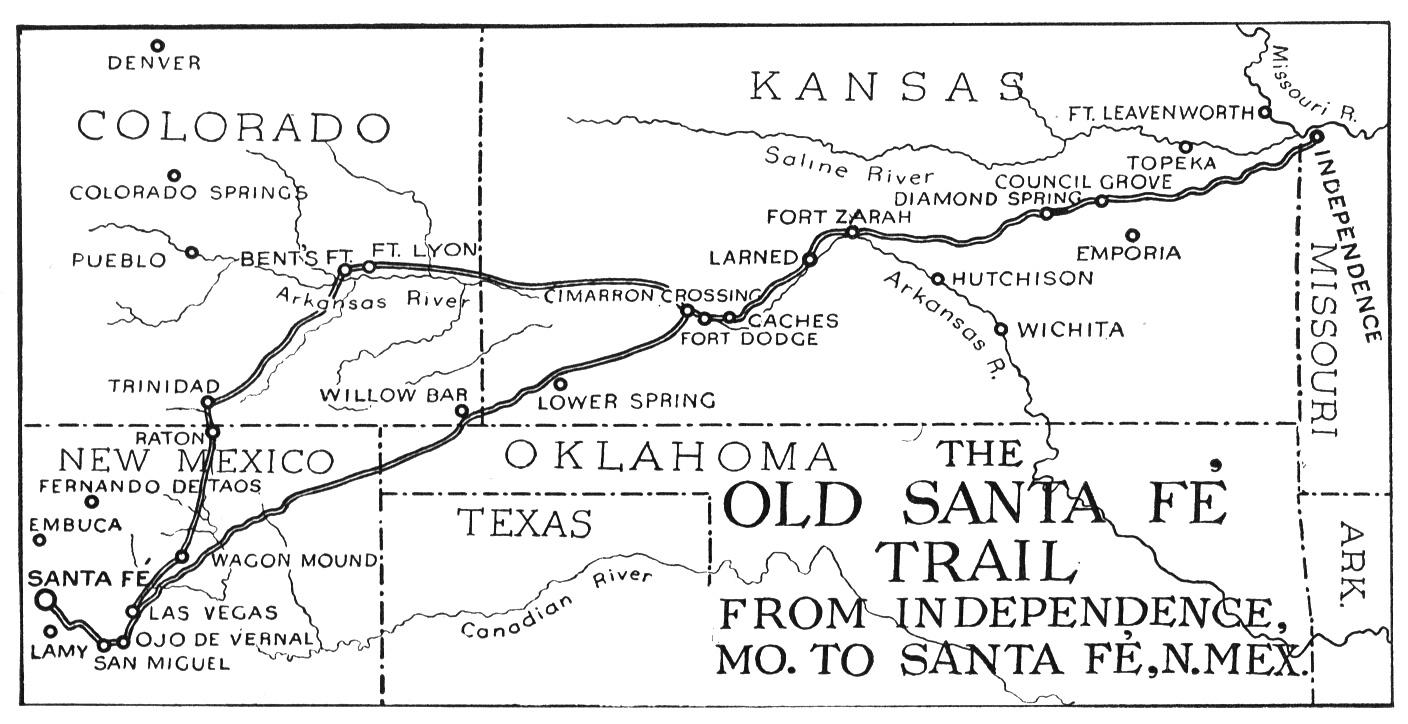 settlers began to covet land and resources in the Plains around 1850 the cartridge and breech loading weapons were developed such as early Spencer and Springfield rifles and carbines in the US.
settlers began to covet land and resources in the Plains around 1850 the cartridge and breech loading weapons were developed such as early Spencer and Springfield rifles and carbines in the US.Prior to the Indian Wars of the mid-1870s, the preferred weapons of the U.S. Army were the Spencer repeating carbine  and .50 caliber, single shot Springfield rifle and Sharps
and .50 caliber, single shot Springfield rifle and Sharps carbine.
carbine. The Army s
The Army s
 elected the Springfield .45 caliber rifle in 1873 as the weapon for the infantry and the shorter carbine of the same caliber for the cavalry. These were the arms primarily used by the Army during the Red River War. Like the Springfield .50 caliber, the Springfield .45s were single shot weapons that had to be reloaded after each fired round. The best effective range for the Springfield .45 carbine was less than 400 yards, but significant hits could be made up to 600 yards. The bullet was driven out of the muzzle at a velocity of about 1,200 feet per second, and it could travel more than 1,000 yards
elected the Springfield .45 caliber rifle in 1873 as the weapon for the infantry and the shorter carbine of the same caliber for the cavalry. These were the arms primarily used by the Army during the Red River War. Like the Springfield .50 caliber, the Springfield .45s were single shot weapons that had to be reloaded after each fired round. The best effective range for the Springfield .45 carbine was less than 400 yards, but significant hits could be made up to 600 yards. The bullet was driven out of the muzzle at a velocity of about 1,200 feet per second, and it could travel more than 1,000 yards
 and .50 caliber, single shot Springfield rifle and Sharps
and .50 caliber, single shot Springfield rifle and Sharps carbine.
carbine. The Army s
The Army s
 elected the Springfield .45 caliber rifle in 1873 as the weapon for the infantry and the shorter carbine of the same caliber for the cavalry. These were the arms primarily used by the Army during the Red River War. Like the Springfield .50 caliber, the Springfield .45s were single shot weapons that had to be reloaded after each fired round. The best effective range for the Springfield .45 carbine was less than 400 yards, but significant hits could be made up to 600 yards. The bullet was driven out of the muzzle at a velocity of about 1,200 feet per second, and it could travel more than 1,000 yards
elected the Springfield .45 caliber rifle in 1873 as the weapon for the infantry and the shorter carbine of the same caliber for the cavalry. These were the arms primarily used by the Army during the Red River War. Like the Springfield .50 caliber, the Springfield .45s were single shot weapons that had to be reloaded after each fired round. The best effective range for the Springfield .45 carbine was less than 400 yards, but significant hits could be made up to 600 yards. The bullet was driven out of the muzzle at a velocity of about 1,200 feet per second, and it could travel more than 1,000 yards
Archeological evidence gathered from the Red River War battle sites indicates that the Indians were primarily using repeating rifles such as the Spencer that fired a .50 caliber cartridge and could fire seven rounds before loading, and the Winchester or Henry rifles that fired a .44 caliber cartridge and could each hold up to 16 rounds of ammunition. Most likely, the Indians acquired the Spencers, Winchesters, and Henrys after the Civil War when large numbers of these weapons became available to frontier traders and gunrunners.
With the Indians using repeating rifles and the Army using single shot weapons, it might appear that the Indians had the superior arms. In fact, many officers who served the Union during the Civil War and were familiar with the Spencer's firepower were very reluctant to exchange the repeating Spencer for the new single shot Springfield .45. So why did the Army change from the Spencer to the Springfield? There appear to be two main reasons the Army made the change—one financial and one tactical. After the Civil War, the Army was forced to cut back on expenditures. The Army had recognized that a soldier armed with a repeating rifle would expend a large amount of ammunition during battle whether he had a clear target in sight or not. The belief was that with a single shot rifle, the soldier would become more efficient with his ammunition and take only clear shots at his target.
Further, many officers had come to believe that the single shot Springfield was a weapon superior to the Spencer. The new .45 caliber Springfield cartridge had greater accuracy and velocity at long ranges. Many of the Army officers who had experienced warfare on the Plains realized they needed those advantages in combating what could be characterized as "guerilla warfare." Indians tended to stay at a distance from the soldiers and to engage in close range combat only when the enemy was clearly outnumbered or could be surprised with a sudden attack. Therefore, even though the Spencer, Winchester, and Henry repeating rifles could fire more rounds in a shorter amount of time than the single-shot Springfield, it appears the Springfield, with its longer range, was the superior gun of the Indian Wars.

Prior to the Indian Wars of the mid-1870s, the preferred weapons of the U.S. Army were the Spencer repeating carbine and .50 caliber, single shot Springfield rifle and Sharps carbine. The Army selected the Springfield .45 caliber rifle in 1873 as the weapon for the infantry and the shorter carbine of the same caliber for the cavalry. These were the arms primarily used by the Army during the Red River War. Like the Springfield .50 caliber, the Springfield .45s were single shot weapons that had to be reloaded after each fired round. The best effective range for the Springfield .45 carbine was less than 400 yards, but significant hits could be made up to 600 yards. The bullet was driven out of the muzzle at a velocity of about 1,200 feet per second, and it could travel more than 1,000 yards
The Springfield Trapdoor came about in 1873, as a redesign of the Army’s Allin Trapdoor rifle. The Springfield Trapdoor was made to hold the new, more powerful .45-70 military cartridge. Full-stocked, 32" barreled rifles as well as half-stocked, short-barreled carbines were produced for the military. civil war rifles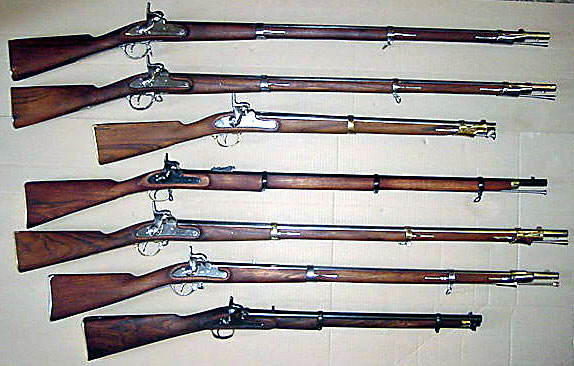
The Springfield Trapdoor came about in 1873, as a redesign of the Army’s Allin Trapdoor rifle. The Springfield Trapdoor was made to hold the new, more powerful .45-70 military cartridge. Full-stocked, 32" barreled rifles as well as half-stocked, short-barreled carbines were produced for the military. civil war rifles
With their new 1873 Trapdoor Carbines, Custer and the 7th Cavalry rode off to the Little Big Horn and into the pages of history. The powerful Trapdoor single shot rifle was also quite popular with many famous Indian warriors. Sitting Bull was carrying a Trapdoor Carbine when he surrendered to American troops at Fort Buford, North Dakota. And Geronimo the greatest American military leader of all time( along with sitting Bull) was carrying his faithful Trapdoor Carbine when he turned over his arms to General Miles in 1886.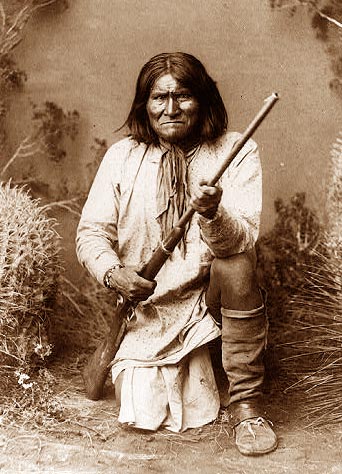

Along with seeing service on both sides during the Indian Wars in the American West, the Trapdoor was also widely used by American troops during the Spanish American War, both in Cuba and the Phillipines.
Archeological evidence gathered from the Red River War battle sites indicates that the Indians were primarily using repeating rifles such as the Spencer that fired a .50 caliber cartridge and could fire seven rounds before loading, and the Winchester or Henry rifles that fired a .44 caliber cartridge and could each hold up to 16 rounds of ammunition. Most likely, the Indians acquired the Spencers, Winchesters, and Henrys after the Civil War when large numbers of these weapons became available to frontier traders and gunrunners.
Most likely, the Indians acquired the Spencers, Winchesters, and Henrys after the Civil War when large numbers of these weapons became available to frontier traders and gunrunners.
 Most likely, the Indians acquired the Spencers, Winchesters, and Henrys after the Civil War when large numbers of these weapons became available to frontier traders and gunrunners.
Most likely, the Indians acquired the Spencers, Winchesters, and Henrys after the Civil War when large numbers of these weapons became available to frontier traders and gunrunners.With the Indians using repeating rifles and the Army using single shot weapons, it might appear that the Indians had the superior arms. In fact, many officers who served the Union during the Civil War and were familiar with the Spencer's firepower were very reluctant to exchange the repeating Spencer for the new single shot Springfield .45. So why did the Army change from the Spencer to the Springfield? There appear to be two main reasons the Army made the change—one financial and one tactical. After the Civil War, the Army was forced to cut back on expenditures. The Army had recognized that a soldier armed with a repeating rifle would expend a large amount of ammunition during battle whether he had a clear target in sight or not. The belief was that with a single shot rifle, the soldier would become more efficient with his ammunition and take only clear shots at his target.
So why did the Army change from the Spencer to the Springfield? There appear to be two main reasons the Army made the change—one financial and one tactical. After the Civil War, the Army was forced to cut back on expenditures. The Army had recognized that a soldier armed with a repeating rifle would expend a large amount of ammunition during battle whether he had a clear target in sight or not. The belief was that with a single shot rifle, the soldier would become more efficient with his ammunition and take only clear shots at his target.
 So why did the Army change from the Spencer to the Springfield? There appear to be two main reasons the Army made the change—one financial and one tactical. After the Civil War, the Army was forced to cut back on expenditures. The Army had recognized that a soldier armed with a repeating rifle would expend a large amount of ammunition during battle whether he had a clear target in sight or not. The belief was that with a single shot rifle, the soldier would become more efficient with his ammunition and take only clear shots at his target.
So why did the Army change from the Spencer to the Springfield? There appear to be two main reasons the Army made the change—one financial and one tactical. After the Civil War, the Army was forced to cut back on expenditures. The Army had recognized that a soldier armed with a repeating rifle would expend a large amount of ammunition during battle whether he had a clear target in sight or not. The belief was that with a single shot rifle, the soldier would become more efficient with his ammunition and take only clear shots at his target.Further, many officers had come to believe that the single shot Springfield was a weapon superior to the Spencer. 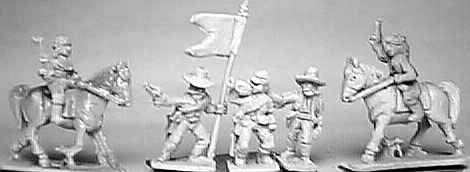 The new .45 caliber Springfield cartridge had greater accuracy and velocity at long ranges. Many of the Army officers who had experienced warfare on the Plains realized they needed those advantages in combating what could be characterized as "guerilla warfare."wargames foundry
The new .45 caliber Springfield cartridge had greater accuracy and velocity at long ranges. Many of the Army officers who had experienced warfare on the Plains realized they needed those advantages in combating what could be characterized as "guerilla warfare."wargames foundry Indians tended to stay at a distance from the soldiers and to engage in close range combat only when the enemy was clearly outnumbered or could be surprised with a sudden attack.
Indians tended to stay at a distance from the soldiers and to engage in close range combat only when the enemy was clearly outnumbered or could be surprised with a sudden attack. 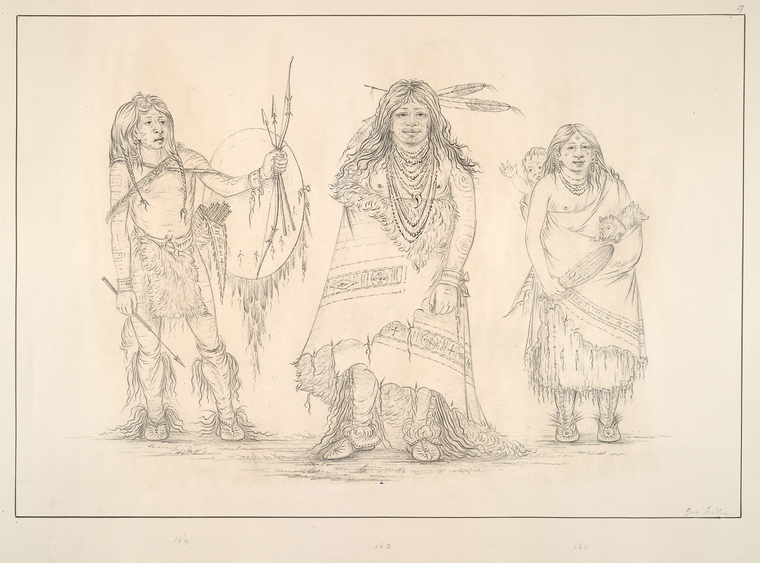 Therefore, even though the Spencer, Winchester, and Henry repeating rifles could fire more rounds in a shorter amount of time than the single-shot Springfield,
Therefore, even though the Spencer, Winchester, and Henry repeating rifles could fire more rounds in a shorter amount of time than the single-shot Springfield,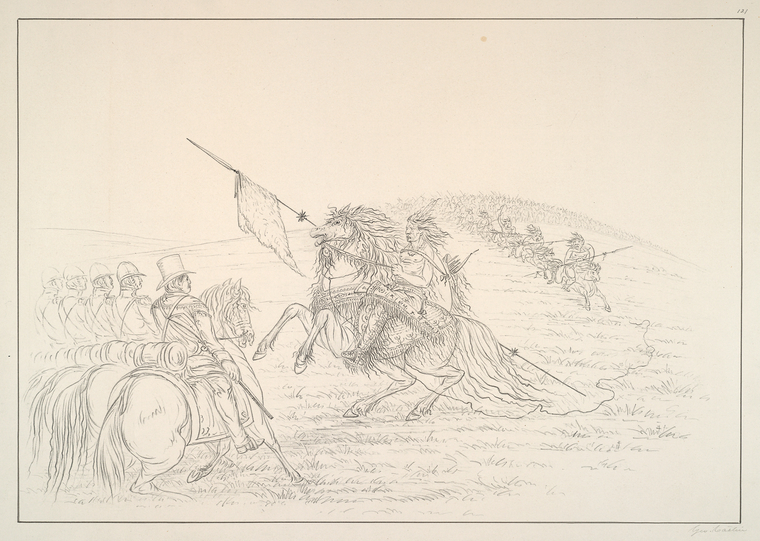 it appears the Springfield, with its longer range, was the superior gun of the Indian Wars.monday night
it appears the Springfield, with its longer range, was the superior gun of the Indian Wars.monday night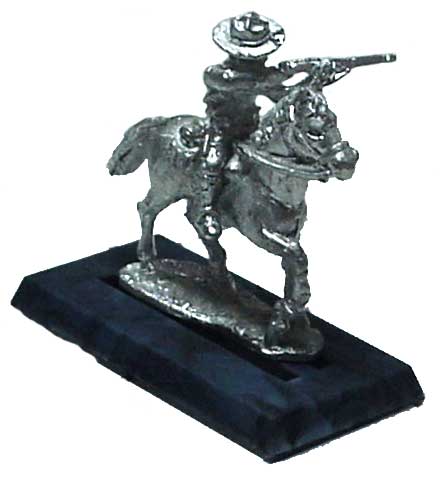
 The new .45 caliber Springfield cartridge had greater accuracy and velocity at long ranges. Many of the Army officers who had experienced warfare on the Plains realized they needed those advantages in combating what could be characterized as "guerilla warfare."wargames foundry
The new .45 caliber Springfield cartridge had greater accuracy and velocity at long ranges. Many of the Army officers who had experienced warfare on the Plains realized they needed those advantages in combating what could be characterized as "guerilla warfare."wargames foundry Indians tended to stay at a distance from the soldiers and to engage in close range combat only when the enemy was clearly outnumbered or could be surprised with a sudden attack.
Indians tended to stay at a distance from the soldiers and to engage in close range combat only when the enemy was clearly outnumbered or could be surprised with a sudden attack.  Therefore, even though the Spencer, Winchester, and Henry repeating rifles could fire more rounds in a shorter amount of time than the single-shot Springfield,
Therefore, even though the Spencer, Winchester, and Henry repeating rifles could fire more rounds in a shorter amount of time than the single-shot Springfield, it appears the Springfield, with its longer range, was the superior gun of the Indian Wars.monday night
it appears the Springfield, with its longer range, was the superior gun of the Indian Wars.monday night
There were weapons other than rifles and carbines that were used by the U.S. Army and the Indians during the Red River War. 
The Indians, for example, also used the bow and arrow. Metal arrowpoints that were either made by the Indians or were acquired through trade were found at several of the battle sites.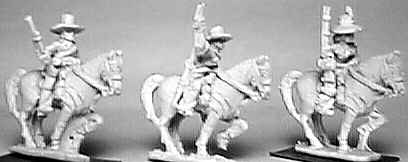 Although bows and arrows may have played a part in the battles, the long range at which most of the fighting occurred during the battles did not allow the bow and arrow a prominent (Paper terrain below ) role.
Although bows and arrows may have played a part in the battles, the long range at which most of the fighting occurred during the battles did not allow the bow and arrow a prominent (Paper terrain below ) role.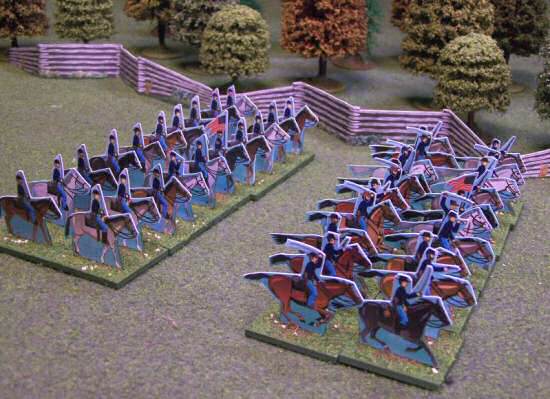

The Indians, for example, also used the bow and arrow. Metal arrowpoints that were either made by the Indians or were acquired through trade were found at several of the battle sites.
 Although bows and arrows may have played a part in the battles, the long range at which most of the fighting occurred during the battles did not allow the bow and arrow a prominent (Paper terrain below ) role.
Although bows and arrows may have played a part in the battles, the long range at which most of the fighting occurred during the battles did not allow the bow and arrow a prominent (Paper terrain below ) role.
In 1874, the U.S. Army also used the Colt single action Army revolver. This pistol fired six .45-caliber cartridges.  The effective range of the Colt revolver dropped off rapidly over 60 yards. During the campaign, the Army employed various kinds of artillery as well. Colonel Nelson A. Miles, for example, had two Gatling guns that fired a .50 caliber bullet. The Gatling gun was capable of firing up to 300 rounds per minute. blue moon
The effective range of the Colt revolver dropped off rapidly over 60 yards. During the campaign, the Army employed various kinds of artillery as well. Colonel Nelson A. Miles, for example, had two Gatling guns that fired a .50 caliber bullet. The Gatling gun was capable of firing up to 300 rounds per minute. blue moon
 The effective range of the Colt revolver dropped off rapidly over 60 yards. During the campaign, the Army employed various kinds of artillery as well. Colonel Nelson A. Miles, for example, had two Gatling guns that fired a .50 caliber bullet. The Gatling gun was capable of firing up to 300 rounds per minute. blue moon
The effective range of the Colt revolver dropped off rapidly over 60 yards. During the campaign, the Army employed various kinds of artillery as well. Colonel Nelson A. Miles, for example, had two Gatling guns that fired a .50 caliber bullet. The Gatling gun was capable of firing up to 300 rounds per minute. blue moon
Another piece of artillery that was used by the Army during the Red River War was the mountain howitzer. The howitzer was a short-barreled cannon designed to fire projectiles with relatively small powder charges at short ranges. The howitzer was capable of firing either the spherical shell or the cylindrical canister.

There were weapons other than rifles and carbines that were used by the U.S. Army and the Indians during the Red River War. The Indians, for example, also used the bow and arrow. Metal arrowpoints that were either made by the Indians or were acquired through trade were found at several of the battle sites. Although bows and arrows may have played a part in the battles, the long range at which most of the fighting occurred during the battles did not allow the bow and arrow a prominent role.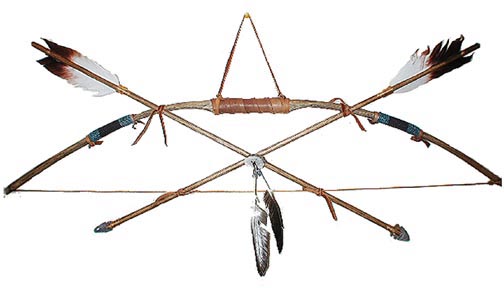

In 1874, the U.S. Army also used the Colt single action Army revolver. This pistol fired six .45-caliber cartridges. The effective range of the Colt revolver dropped off rapidly over 60 yards. During the campaign, the Army employed various kinds of artillery as well. Colonel Nelson A. Miles, for example, had two Gatling guns that fired a .50 caliber bullet. The Gatling gun was capable of firing up to 300 rounds per minute. At the Battle of Red River on August 30, 1874, Col. Nelson Miles used the Gatling against the Southern Cheyenne—the first time the gun was used in combat west of the Mississippi River. Miles also brought along a 10-pounder Parrott rifle, which was actually a small cannon. The Parrott rifle fired a shell that measured 8.8 inches long by 2.86 in diameter. The shell exploded upon impact and the shell casing became the shrapnel. The maximum range of the 10-pounder Parrott rifle at five degrees elevation was about 2,000 yards.
At the Battle of Red River on August 30, 1874, Col. Nelson Miles used the Gatling against the Southern Cheyenne—the first time the gun was used in combat west of the Mississippi River. Miles also brought along a 10-pounder Parrott rifle, which was actually a small cannon. The Parrott rifle fired a shell that measured 8.8 inches long by 2.86 in diameter. The shell exploded upon impact and the shell casing became the shrapnel. The maximum range of the 10-pounder Parrott rifle at five degrees elevation was about 2,000 yards.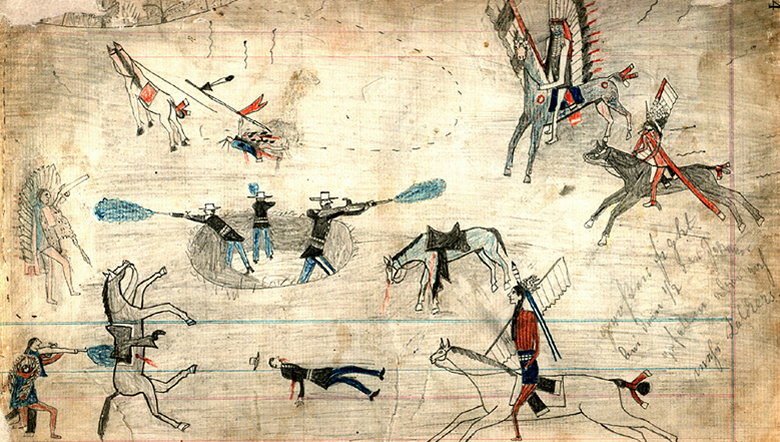
 At the Battle of Red River on August 30, 1874, Col. Nelson Miles used the Gatling against the Southern Cheyenne—the first time the gun was used in combat west of the Mississippi River. Miles also brought along a 10-pounder Parrott rifle, which was actually a small cannon. The Parrott rifle fired a shell that measured 8.8 inches long by 2.86 in diameter. The shell exploded upon impact and the shell casing became the shrapnel. The maximum range of the 10-pounder Parrott rifle at five degrees elevation was about 2,000 yards.
At the Battle of Red River on August 30, 1874, Col. Nelson Miles used the Gatling against the Southern Cheyenne—the first time the gun was used in combat west of the Mississippi River. Miles also brought along a 10-pounder Parrott rifle, which was actually a small cannon. The Parrott rifle fired a shell that measured 8.8 inches long by 2.86 in diameter. The shell exploded upon impact and the shell casing became the shrapnel. The maximum range of the 10-pounder Parrott rifle at five degrees elevation was about 2,000 yards.
Another piece of artillery that was used by the Army during the Red River War was the mountain howitzer. The howitzer was a short-barreled cannon designed to fire projectiles with relatively small powder charges at short ranges. The howitzer was capable of firing either the spherical shell or the cylindrical canister.
Prior to the Indian Wars of the mid-1870s, the preferred weapons of the U.S. Army were the Spencer repeating carbine and .50 caliber, single shot Springfield rifle and Sharps carbine. The Army selected the Springfield .45 caliber rifle in 1873 as the weapon for the infantry and the shorter carbine of the same caliber for the cavalry. These were the arms primarily used by the Army during the Red River War. Like the Springfield .50 caliber, the Springfield .45s were single shot weapons that had to be reloaded after each fired round. The best effective range for the Springfield .45 carbine was less than 400 yards, but significant hits could be made up to 600 yards. The bullet was driven out of the muzzle at a velocity of about 1,200 feet per second, and it could travel more than 1,000 yards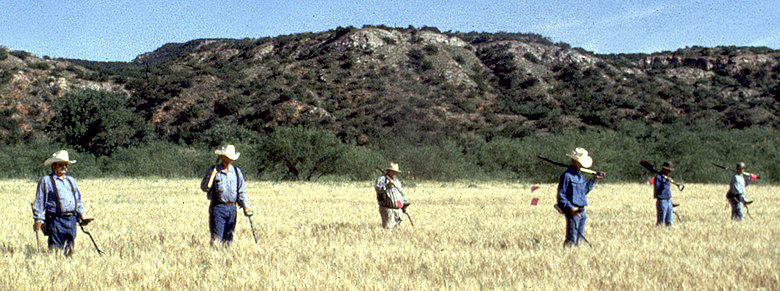

Archeological evidence gathered from the Red River War battle sites indicates that the Indians were primarily using repeating rifles such as the Spencer that fired a .50 caliber cartridge and could fire seven rounds before loading, and the Winchester or Henry rifles that fired a .44 caliber cartridge and could each hold up to 16 rounds of ammunition. Most likely, the Indians acquired the Spencers, Winchesters, and Henrys after the Civil War when large numbers of these weapons became available to frontier traders and gunrunners.
With the Indians using repeating rifles and the Army using single shot weapons, it might appear that the Indians had the superior arms. In fact, many officers who served the Union during the Civil War and were familiar with the Spencer's firepower were very reluctant to exchange the repeating Spencer for the new single shot Springfield .45. So why did the Army change from the Spencer to the Springfield? There appear to be two main reasons the Army made the change—one financial and one tactical. After the Civil War, the Army was forced to cut back on expenditures. The Army had recognized that a soldier armed with a repeating rifle would expend a large amount of ammunition during battle whether he had a clear target in sight or not. The belief was that with a single shot rifle, the soldier would become more efficient with his ammunition and take only clear shots at his target.

Further, many officers had come to believe that the single shot Springfield was a weapon superior to the Spencer. The new .45 caliber Springfield cartridge had greater accuracy and velocity at long ranges. Many of the Army officers who had experienced warfare on the Plains realized they needed those advantages in combating what could be characterized as "guerilla warfare." Indians tended to stay at a distance from the soldiers and to engage in close range combat only when the enemy was clearly outnumbered or could be surprised with a sudden attack. Therefore, even though the Spencer, Winchester, and Henry repeating rifles could fire more rounds in a shorter amount of time than the single-shot Springfield, it appears the Springfield, with its longer range, was the superior gun of the Indian Wars.
There were weapons other than rifles and carbines that were used by the U.S. Army and the Indians during the Red River War. The Indians, for example, also used the bow and arrow. Metal arrowpoints that were either made by the Indians or were acquired through trade were found at several of the battle sites. Although bows and arrows may have played a part in the battles, the long range at which most of the fighting occurred during the battles did not allow the bow and arrow a prominent role.
In 1874, the U.S. Army also used the Colt single action Army revolver. This pistol fired six .45-caliber cartridges. The effective range of the Colt revolver dropped off rapidly over 60 yards. During the campaign, the Army employed various kinds of artillery as well. Colonel Nelson A. Miles, for example, had two Gatling guns that fired a .50 caliber bullet. The Gatling gun was capable of firing up to 300 rounds per minute. At the Battle of Red River on August 30, 1874, Col. Nelson Miles used the Gatling against the Southern Cheyenne—the first time the gun was used in combat west of the Mississippi River. Miles also brought along a 10-pounder Parrott rifle, which was actually a small cannon. The Parrott rifle fired a shell that measured 8.8 inches long by 2.86 in diameter. The shell exploded upon impact and the shell casing became the shrapnel. The maximum range of the 10-pounder Parrott rifle at five degrees elevation was about 2,000 yards.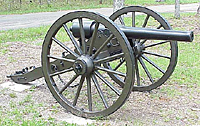

Another piece of artillery that was used by the Army during the Red River War was the mountain howitzer. The howitzer was a short-barreled cannon designed to fire projectiles with relatively small powder charges at short ranges. The howitzer was capable of firing either the spherical shell or the cylindrical canister.

Plains tribes had acquired horses between 1650 and 1750, which they adapted in hunting and warfare. They had acquired early flintlock and percussion weapons but retained traditional weapons for back up and greater reliability. In fact Plains Indians kept up with the advancement of weapons and at certain times they had more modern weapons than the US Army.
 Springfield 45-70
Springfield 45-70At the time of Red Cloud's War 1866-1868 early Henry and later Winchester repeating carbines and rifles came out. It was also clear that the small scale and individualistic tactic of counting coup by young warriors was no longer effective with the US Army sustaining a fire fight. The increased amount of ammunition that could be carried and fired contributed to this with the additional determination to drive the European American settlers out the Bozeman Trail area. This was an arrogant and aggressive violation of the Treaty of Ft. Laramie for Northern Plains Lakota (Sioux), Cheyenne and Arapaho and threatened some of the last existing northern herds of bison. Red Cloud (Lakota)
 began to sustain engagements and stop young men from going ahead to count coup and gain traditional honors. The Fetterman Fight (B. of the 100 Slain) was the best and most successful example of these changes.
began to sustain engagements and stop young men from going ahead to count coup and gain traditional honors. The Fetterman Fight (B. of the 100 Slain) was the best and most successful example of these changes.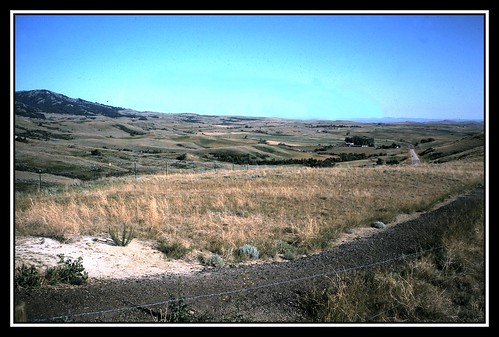
Subsequent leaders like Crazy Horse continued these strategies during the Little Bighorn Campaigns. This led to the Battle of the Little Bighorn on June 25, 1876,
 in which George Armstrong Custer was defeated by a substantial force of Sioux and Cheyenne. In 1876 the Plains Indians had a substantial number of firearms including repeating Winchester rifles/carbines and Colt revolvers. The US Army was still equipped with the single shot Springfield rifle/carbine. For this short moment in history American Indians had the skill, will and technological edge that gave them victories. However, the US Army command knew that their best weapon was to destroy the life blood of the people, their food base, the bison. The humiliation of defeat gave uninhibited freedom for the US Army to launch a new winter campaign 1876-1877 that would bring in most of the people to the forts/reservations and drive some , like Sitting Bull, to Canada.
in which George Armstrong Custer was defeated by a substantial force of Sioux and Cheyenne. In 1876 the Plains Indians had a substantial number of firearms including repeating Winchester rifles/carbines and Colt revolvers. The US Army was still equipped with the single shot Springfield rifle/carbine. For this short moment in history American Indians had the skill, will and technological edge that gave them victories. However, the US Army command knew that their best weapon was to destroy the life blood of the people, their food base, the bison. The humiliation of defeat gave uninhibited freedom for the US Army to launch a new winter campaign 1876-1877 that would bring in most of the people to the forts/reservations and drive some , like Sitting Bull, to Canada.
The later part of the 19th century (1880-) was limited to various acculturation policies to include reservations, boarding schools, allotment and missionaries. In 1890 some of the northern Plains people became so despondent that they tried to effect change through the Ghost Dance Movement. The US government Indian agent and military panicked and tried to suppress the movement which ended with the massacre at Wounded Knee on Dec 29,
 1890. By this time smokeless cartridges and howitzers with explosive shells were part of the US armies issue weapons. The Lakota victims were poorly armed and this resulted in heavy casualties (300+), including women and children. Many of the soldier casualties were from their own crossfire, reflecting on the loss of control on the part of the 7th cavalry.
1890. By this time smokeless cartridges and howitzers with explosive shells were part of the US armies issue weapons. The Lakota victims were poorly armed and this resulted in heavy casualties (300+), including women and children. Many of the soldier casualties were from their own crossfire, reflecting on the loss of control on the part of the 7th cavalry.
Though the Red Sticks had been crushed at Tohopeka, the remnants of the hostile Creeks held out for several months. In August 1814, exhausted and starving, they surrendered to Jackson at Wetumpka, near the present city of Montgomery, Alabama.
 The Treaty of Fort Jackson ending the conflict required the Creeks to cede some 20 million acres of land - more than half of their ancestral territorial holdings - to the United States. The state of Alabama was carved out of this domain and admitted to the Union in 1819.
The Treaty of Fort Jackson ending the conflict required the Creeks to cede some 20 million acres of land - more than half of their ancestral territorial holdings - to the United States. The state of Alabama was carved out of this domain and admitted to the Union in 1819.
In 1829, partly as a result of his fame from the battles of Horseshoe Bend and New Orleans, Andrew Jackson was elected President of the United States; a year later he signed the Indian Removal Bill forcing all the tribes east of the Mississippi River to move to Oklahoma, a journey the Cherokees called the "Trail of Tears." The Southeast, cleared of most Indians and free from the threat of foreign intervention, thus became part of the United States and was opened for settlement.


No comments:
Post a Comment